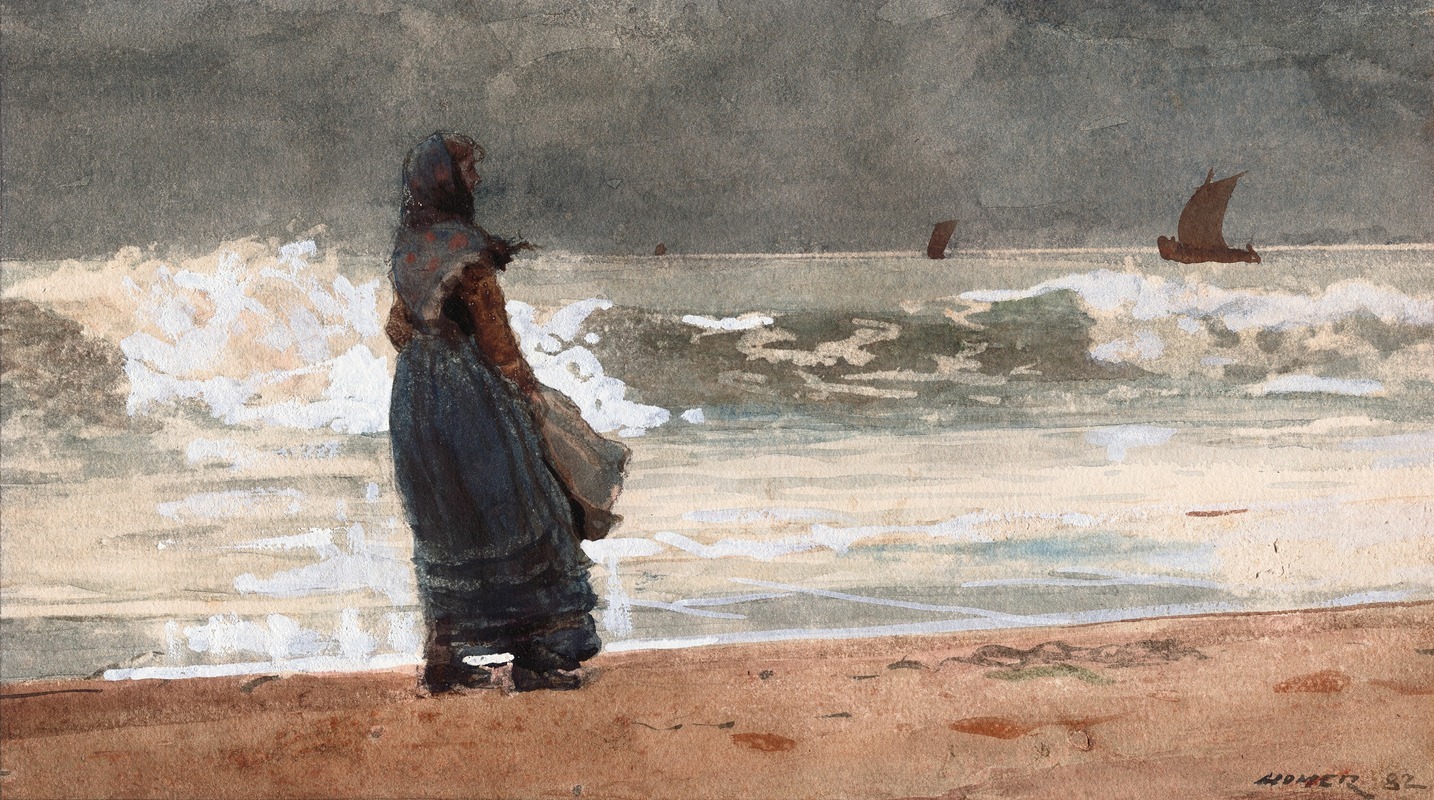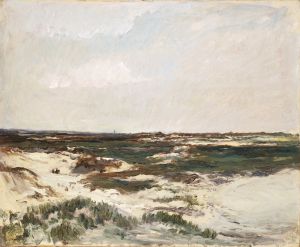
The Watcher, Tynemouth
A hand-painted replica of Winslow Homer’s masterpiece The Watcher, Tynemouth, meticulously crafted by professional artists to capture the true essence of the original. Each piece is created with museum-quality canvas and rare mineral pigments, carefully painted by experienced artists with delicate brushstrokes and rich, layered colors to perfectly recreate the texture of the original artwork. Unlike machine-printed reproductions, this hand-painted version brings the painting to life, infused with the artist’s emotions and skill in every stroke. Whether for personal collection or home decoration, it instantly elevates the artistic atmosphere of any space.
"The Watcher, Tynemouth" is a watercolor painting created by the American artist Winslow Homer in 1881. This artwork is part of Homer's series of paintings that he produced during his stay in the coastal village of Tynemouth, located in the northeast of England. Homer is renowned for his marine subjects and his ability to capture the essence of the sea and the lives of those who live by it.
Winslow Homer traveled to England in 1881 and spent approximately two years there. During his time in Tynemouth, he was deeply inspired by the rugged coastline, the turbulent sea, and the daily lives of the local fishermen and their families. "The Watcher, Tynemouth" reflects this inspiration and is a testament to Homer's keen observation and his skill in rendering the natural environment and human figures with sensitivity and precision.
The painting depicts a solitary figure, presumably a woman, standing on the shore and gazing out at the sea. The figure is dressed in dark, heavy clothing, which suggests the harsh weather conditions typical of the region. The composition of the painting is simple yet evocative, with the figure positioned slightly off-center, creating a sense of openness and vastness in the surrounding seascape. The use of watercolor allows for a fluid and dynamic representation of the sea and sky, with varying shades of blue and gray conveying the mood and atmosphere of the scene.
Homer's technique in "The Watcher, Tynemouth" demonstrates his mastery of watercolor as a medium. He employs a range of brushstrokes and washes to create texture and depth, capturing the movement of the waves and the play of light on the water. The figure of the watcher is rendered with careful attention to detail, yet there is a sense of ambiguity and mystery about her identity and her thoughts as she looks out to sea.
This painting is significant not only for its artistic qualities but also for its reflection of the themes that preoccupied Homer during this period of his career. The solitary figure, the interaction between humans and the natural world, and the depiction of everyday life in a coastal community are all recurring motifs in Homer's work. "The Watcher, Tynemouth" is a poignant example of how Homer used his art to explore these themes and to convey the beauty and challenges of life by the sea.
"The Watcher, Tynemouth" is part of the collection of the Art Institute of Chicago, where it continues to be appreciated by visitors and art historians alike. It stands as a testament to Winslow Homer's enduring legacy as one of America's foremost painters and his ability to capture the essence of the human experience in relation to the natural world.


















